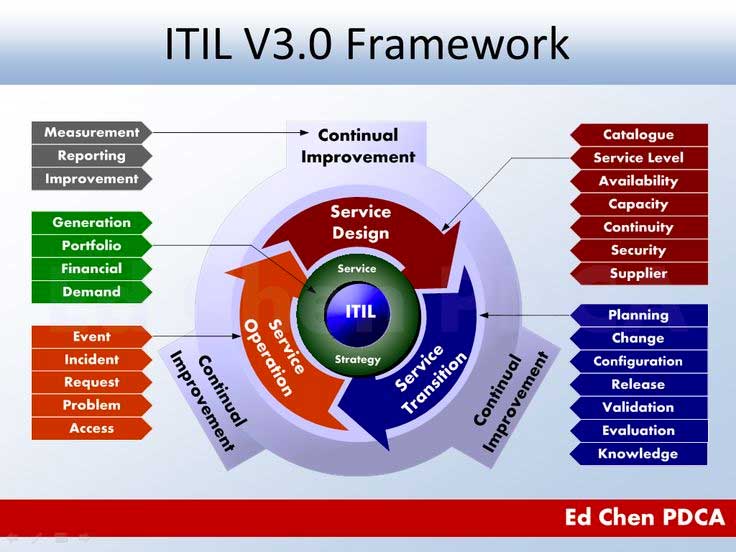- Get to the BigSEO homepage


The history of ITIL began over 20 years ago in the UK. At the time, the United Kingdom was in a severe economic recession and the quality of IT services provided to the British government by various vendors was so poor that the then Central Computer and Telecommunications Agency (CCTA, now the Office of Government Commerce, OGC) was instructed by the government of this country to develop principles for the efficient and cost-effective use of IT resources in ministries and other government agencies and, based on them, form a provider-independent approach to the provision of IT services.
The agency created a working group of representatives of manufacturing companies, users and IT industry consultants. The group members were tasked with summarizing the best practices in the field of IT systems management. As a result of the work, a series of forty books was published, and a unified dictionary of terms was developed. In 1989, this edition was revised and published by the CCTA as a 31-volume book called Government Information Technology Infrastructure Management Methodology (GITMM). In the mid-90s, instead of the name GITMM, the name "ITIL" began to be used.
The second version of the ITIL books library was developed in the late 1990s. This version of ITIL contains 7 core and 2 supplementary books. Its core is the concept of IT Service Management ITSM (IT Service Management), which is based on the use of basic ITIL processes and functions in relation to the organization of the provision of services by IT departments to both various employees of the company and its customers.
The composition of the basic ITIL-2 books:
- Service Delivery (part 1 ITSM) – Service delivery
- Service Support (ITSM part 2) – Service support
- ICT Infrastructure Management – Information and Communication Technology Infrastructure Management
- Security Management – Security Management
- The Business Perspective
- Application Management – Application Management
- Software Asset Management – Software configuration management
Planning to Implement Service Management
ITIL Small-Scale Implementation – Using ITIL in small businesses.
In December 2005, the OGC announced the start of the ITIL Refresh project, focused on improving the usability of the library, as well as developing specific guidelines for applying ITIL principles.
The ITIL-3 Books, published by OGC in May 2007, replaced the ITIL-2 Book Specification with a core set of books that provide practical guidance on IT infrastructure management (IT Infrastructure or ITI) and an additional set of supporting books that provide a model concept for ITI compliance. business.
Sections have been completely redesigned and reorganized to support the new approach of the "Service Lifecycle Format". The ITI process life cycle model in ITIL-3 has been replaced by the IT services life cycle model, which contains the processes necessary to manage them at all stages of the life cycle.
(So that there is no confusion, service and service are the same here. When we say service, we mean service. And vice versa.)
In 2011, a new edition of ITIL-3 was released (an edition, not a version!!!). You can see the differences between the 2011 and 2007 editions here (PDF file, in English, there was no time to translate, and it was not expedient – the file is small, because the differences are small).
In accordance with ITIL-3, a service (that is, a service) is a set of activities that bring value to the client, contributing to the result that the client wants to achieve, without being responsible for specific costs and risks.
In the third version of ITIL, the general concept remains unchanged: the library still contains descriptions of successful management decisions in various ITIs and still serves the interests and needs of business. The authors of ITIL3 have updated the structure of the description of processes, in which the core of the library and additional (complementary) sections are highlighted.
The updated core of ITIL-3 is made up of key concepts and methods that have been used in ITI management practice for a long time (including in ITIL-2). ITIL-3 books with additional sections include descriptions of the application of the concepts outlined in the core, taking into account the specifics of specific enterprises and organizations, in particular in banks or small businesses. The main publications of ITIL-3 are presented in 5 books, the titles of which reflect the life cycle of IT services (IT services):
- Service Strategy
- Service Design
- Service Transition
- Service Operation
- Continuous Service Improvement
